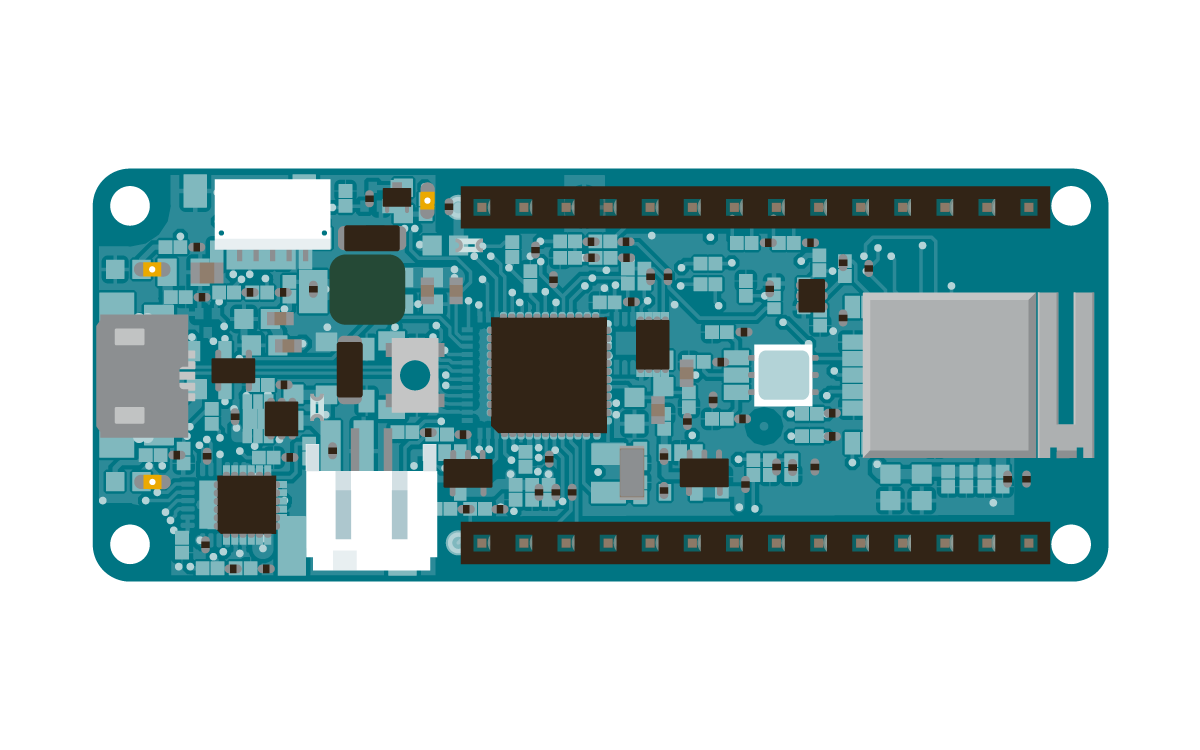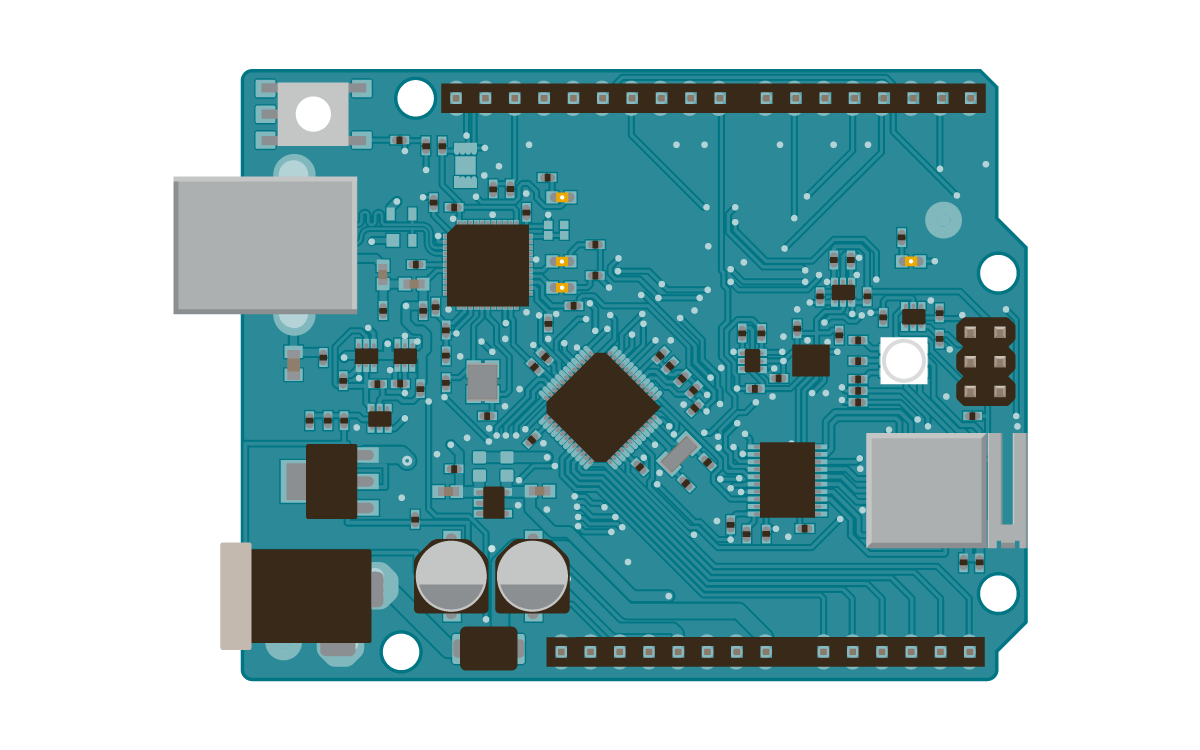WiFi Web Client Repeating
This example shows you how to make repeated HTTP requests using a WiFi equipped board. It connects to http://www.arduino.cc/latest.txt. The content of the page is viewable through your Arduino Software (IDE) Serial Monitor window.
Hardware Required
Circuit
The WiFi module is integrated on your board and you don't need any special circuitry to get this tutorial to work.
Please note: these three boards use dedicated pins to communicate and select the WiFi module, therefore you have no restriction in the usage of the available digital pins connected to the header pins.
Code
You should have access to a 802.11b/g wireless network that connects to the internet for this example. You will need to change the network settings in the sketch to correspond to your particular networks SSID.
For networks using WPA/WPA2 Personal encryption, you need the SSID and password. The shield will not connect to networks using WPA2 Enterprise encryption.
WEP network passwords are hexadecimal strings known as keys. A WEP network can have 4 different keys; each key is assigned a "Key Index" value. For WEP encrypted networks, you need the SSID, the key, and key number.
Repeating Wifi Web Client
This sketch connects to a a web server and makes a request
using a WiFi equipped Arduino board.
created 23 April 2012
modified 31 May 2012
by Tom Igoe
modified 13 Jan 2014
by Federico Vanzati
http://www.arduino.cc/en/Tutorial/WifiWebClientRepeating
This code is in the public domain.
*/
#include <SPI.h>
#include <WiFiNINA.h>
#include "arduino_secrets.h"
///////please enter your sensitive data in the Secret tab/arduino_secrets.h
char ssid[] = SECRET_SSID; // your network SSID (name)
char pass[] = SECRET_PASS; // your network password (use for WPA, or use as key for WEP)
int keyIndex = 0; // your network key Index number (needed only for WEP)
int status = WL_IDLE_STATUS;
// Initialize the Wifi client library
WiFiClient client;
// server address:
char server[] = "example.org";
//IPAddress server(64,131,82,241);
unsigned long lastConnectionTime = 0; // last time you connected to the server, in milliseconds
const unsigned long postingInterval = 10L * 1000L; // delay between updates, in milliseconds
void setup() {
//Initialize serial and wait for port to open:
Serial.begin(9600);
while (!Serial) {
; // wait for serial port to connect. Needed for native USB port only
}
// check for the WiFi module:
if (WiFi.status() == WL_NO_MODULE) {
Serial.println("Communication with WiFi module failed!");
// don't continue
while (true);
}
String fv = WiFi.firmwareVersion();
if (fv < "1.0.0") {
Serial.println("Please upgrade the firmware");
}
// attempt to connect to Wifi network:
while (status != WL_CONNECTED) {
Serial.print("Attempting to connect to SSID: ");
Serial.println(ssid);
// Connect to WPA/WPA2 network. Change this line if using open or WEP network:
status = WiFi.begin(ssid, pass);
// wait 10 seconds for connection:
delay(10000);
}
// you're connected now, so print out the status:
printWifiStatus();
}
void loop() {
// if there's incoming data from the net connection.
// send it out the serial port. This is for debugging
// purposes only:
while (client.available()) {
char c = client.read();
Serial.write(c);
}
// if ten seconds have passed since your last connection,
// then connect again and send data:
if (millis() - lastConnectionTime > postingInterval) {
httpRequest();
}
}
// this method makes a HTTP connection to the server:
void httpRequest() {
// close any connection before send a new request.
// This will free the socket on the Nina module
client.stop();
// if there's a successful connection:
if (client.connect(server, 80)) {
Serial.println("connecting...");
// send the HTTP PUT request:
client.println("GET / HTTP/1.1");
client.println("Host: example.org");
client.println("User-Agent: ArduinoWiFi/1.1");
client.println("Connection: close");
client.println();
// note the time that the connection was made:
lastConnectionTime = millis();
} else {
// if you couldn't make a connection:
Serial.println("connection failed");
}
}
void printWifiStatus() {
// print the SSID of the network you're attached to:
Serial.print("SSID: ");
Serial.println(WiFi.SSID());
// print your board's IP address:
IPAddress ip = WiFi.localIP();
Serial.print("IP Address: ");
Serial.println(ip);
// print the received signal strength:
long rssi = WiFi.RSSI();
Serial.print("signal strength (RSSI):");
Serial.print(rssi);
Serial.println(" dBm");
}
See Also:
- WiFi NINA library – Your reference for the WiFi NINA Library.
- Arduino MKR WiFi 1010 – Product details for the Arduino MKR WiFi 1010 board.
- Arduino MKR VIDOR 4000 – Product details for the Arduino MKR VIDOR 4000 board.
- Arduino UNO WiFi Rev.2 – Product details for the Arduino UNO WiFi Rev.2 board.
- AP_SimpleWebServer : A simple web server to manage a LED with AP feature
- ConnectNoEncryption : Demonstrates how to connect to an open network
- ConnectWithWEP : Demonstrates how to connect to a network that is encrypted with WEP
- ConnectWithWPA : Demonstrates how to connect to a network that is encrypted with WPA2 Personal
- ScanNetworks : Displays all WiFi networks in range
- ScanNetworksAdwanced : Displays all WiFi networks, also the encrypted ones, in range
- SimpleWebServerWiFi : A simple web server to manage a LED
- WiFiChatServer : Set up a simple chat server
- WiFiPing : Demonstrates how to ping a website or IP address
- WiFiSSLClient : Connect to a website using SSL
- UdpNTPClient : Query a Network Time Protocol (NTP) server using UDP
- WiFiUdpSendReceiveString : Send and receive a UDP string
- WiFiWebClient : Connect to a remote webserver
- WiFiWebServer : Serve a webpage from the WiFi module
Last revision 2018/07/12 by SM



